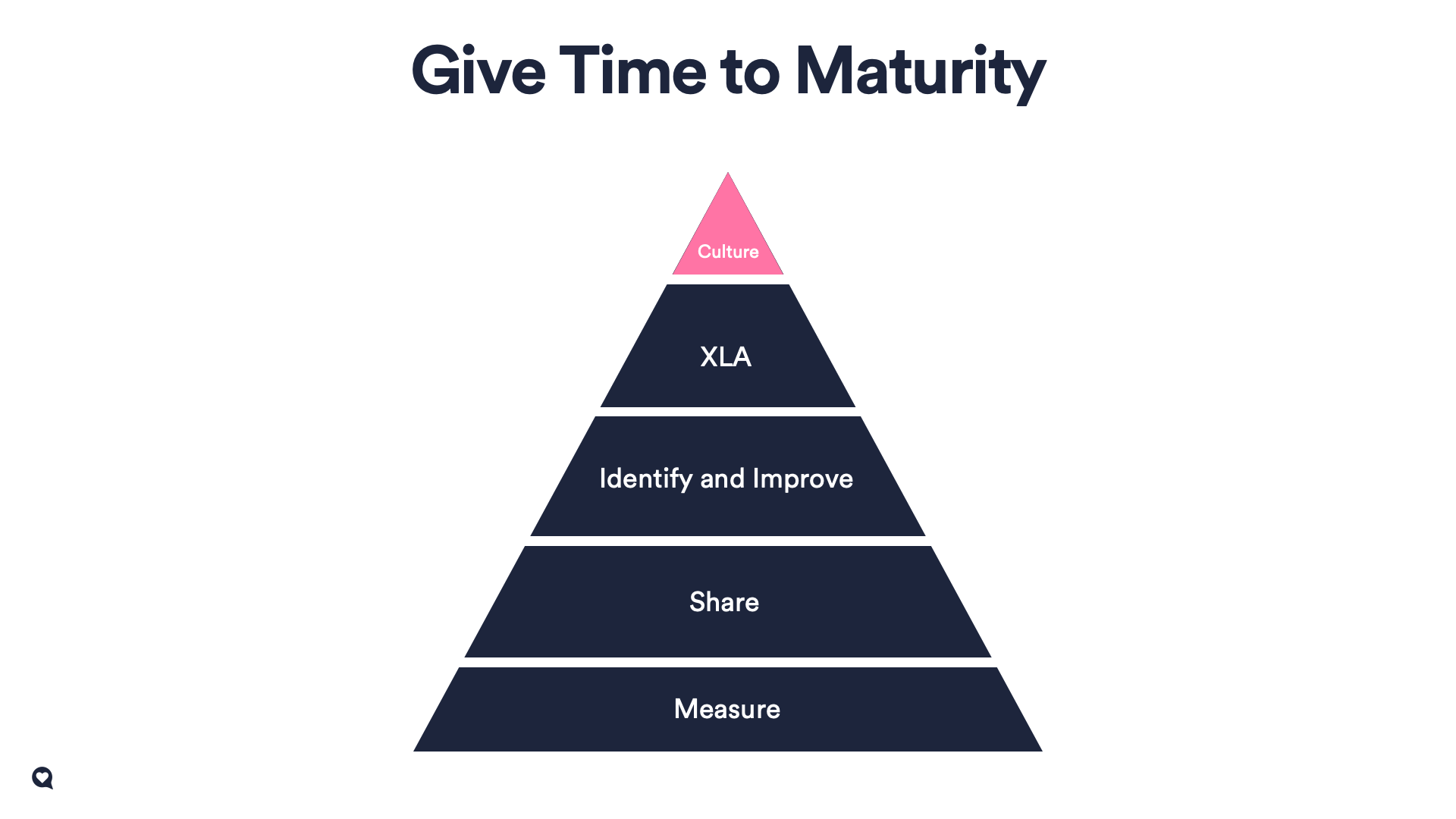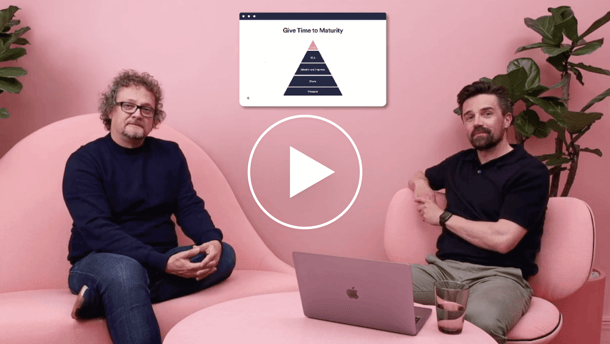1. Measure now, and continuously
The first step towards a human-centric IT is to immediately start measuring how your end-users are perceiving service quality and how your services are causing them to save or lose work time.
Go beyond traditional SLA metrics and forget about yearly IT surveys. Instead, get continuous real-time experience data and qualitative feedback directly from your end-users.
For organizations that have always relied solely on traditional metrics, transitioning to measuring end-user experience and trusting what the data says, will take time. Some may fear getting started, especially since the initial end-user feedback could reflect more poorly on IT than previous metrics. Others may want to wait until after certain IT changes have taken place before measuring.
Importantly however, the point of measuring is not to get a vanity metric for IT, but to establish an accurate baseline of where your IT is at right now. If you have ongoing or planned development efforts, starting to measure as soon as possible and continuously will enable you to immediately assess the impact of those changes!
2. Share the data with all IT stakeholders
Sharing experience data transparently with all stakeholders involved in managing IT services enables them to be on the same page. Each service owner, for example, can now know exactly how their service is performing and how end-users feel about it.
Take our customer Ahlstrom-Munksjö, for instance. Their IT management team has a monthly Happiness meeting where they look at the latest data from end-users together. They then have an open conversation about why some areas are performing as such, and what that might mean for their future actions.
With the experience data made visible and accessible to everyone, their team can have this conversation backed up by real data, rather than relying on gut feelings or overheard complaints from the loudest voices.
Sharing creates transparency, which leads to trust and alignment between different stakeholders and outsourced service providers. Only then can everyone focus on the same issues that need tackling.
3. Identify development areas and improve your IT services
Once all stakeholders understand the state of end-user experience based on the data, you can together identify the most urgent pain points to focus on. Maybe you need to change certain technologies, automate certain processes, or introduce more comprehensive training for Service Agents.
Whatever it is, IT can make data-driven decisions when allocating budget and resources to these improvement projects, and know that the investments are really going towards alleviating the pain points end-users have.
You should also set targets about what you would like to achieve over the next three months, six months, or a year. These concrete targets bring focus to IT’s work, and going back to Step 1, continuous measurement will help your team to evaluate the outcomes of these improvement efforts for end-users.
At this point, I must say that getting to this stage is already a significant step forward. Many of our customers are here now, but most have taken about a year to get here; so give your organization time to mature in its approach towards IT.
Like in the pyramid image at the top of this blog, each step builds upon the foundations laid by the last. So the more widely you measure and share, the more effectively you can identify and improve later on.
4. Implement Experience Level Agreements (XLAs)
Once your organization has reached a high enough level of maturity in experience management, you will be in a good place to start setting experience targets and complementing your Service Level Agreements (SLAs) with Experience Level Agreements (XLAs).
SLAs are an outdated metric, that does not truly give your IT team an accurate measure of how your employees are feeling/experiencing services.
In a nutshell, XLAs are a reimagining of SLAs that focus on what's most important to the end-user. Within these, XLA targets are end-user-centric metrics and KPIs that focus on the perceived quality of IT services and support. They measure the IT service outcomes and value for employees, while SLAs are more centred around outputs of processes and pre-defined time limits.
5. Build a human-centric culture in IT
Over time, by putting end-users first in everything that IT does, you can build a truly human-centric culture in IT. This means always making budget and resource decisions with the primary aim of creating value for end-users.
At the same time, everyone in your IT organization from the IT Directors to Service Agents should be able to see how they are each contributing towards increasing end-user happiness and productivity, and be equipped with the tools to do so.
For Service Owners, this could mean really using the Experience Data to inform and evaluate actions, while for Service Agents, this could mean constantly improving how they serve end-users based on the direct qualitative feedback they get.
Now is the best time to start
So those were five steps to help you build a more human-centric IT. To end off, I want to share one final word of advice about getting started.
Often, we hear our customers say “We are still doing this or that change before starting to measure.” To that we say, the best time to start experience management is always before making changes, not after.
By starting with the first step of measuring end-user experiences now, you can more quickly begin to evaluate whether your planned changes are providing value to end-users. As my co-founder Sami aptly says in the latest episode of Happy in 15, "The point is not to look good, the point is to get good!"
HappySignals IT Experience Management Platform equips you with what you need to build a human-centric IT. Watch this 1-min demo, or better yet, our full product demo to see it in action.






